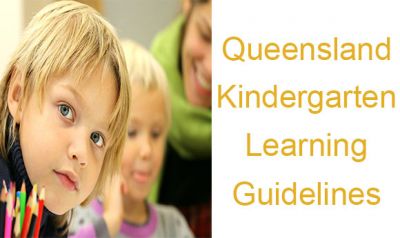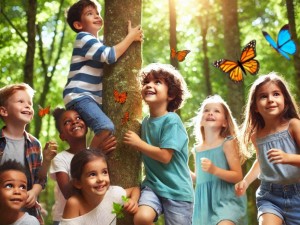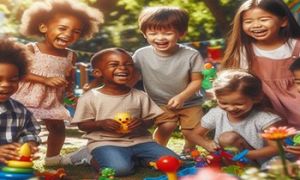The Queensland Kindergarten Learning Guidelines support kindergarten teachers’ professional practice across Queensland.
The guidelines are based on the Early Years Learning Framework for Australia (EYLF) and embrace the inclusive vision that “all children experience learning that is engaging and builds success for life”.
Here is a list of the QKLG, that can be used as a reference guide (updated as of 2019):
Identity
- 1.1 Building a sense of security and trust.
- 1.2 Acting with independence and perseverance.
- 1.3 Building a confident self-identity.
Connectedness
- 2.1 Building positive relationships.
- 2.2 Showing respect for diversity.
- 2.3 Showing respect for environments.
Wellbeing
- 3.1 Building a sense of autonomy.
- 3.2 Exploring ways to be healthy and safe.
- 3.3 Exploring ways to promote physical wellbeing.
Active Learning
- 4.1 Building positive dispositions towards learning.
- 4.2 Showing confidence and involvement in learning/
4.3 Using technologies for learning and communication.
Communicating
- 5.1 Exploring and expanding language.
- 5.2 Exploring literacy in personally meaningful ways.
- 5.3 Exploring numeracy in personally meaningful ways.
Reference:
State Government Of Queensland (2019), Queensland Kindergarten Learning Guidelines







 Here is the list of the EYLF Learning Outcomes that you can use as a guide or reference for your documentation and planning. The EYLF
Here is the list of the EYLF Learning Outcomes that you can use as a guide or reference for your documentation and planning. The EYLF The EYLF is a guide which consists of Principles, Practices and 5 main Learning Outcomes along with each of their sub outcomes, based on identity,
The EYLF is a guide which consists of Principles, Practices and 5 main Learning Outcomes along with each of their sub outcomes, based on identity, This is a guide on How to Write a Learning Story. It provides information on What Is A Learning Story, Writing A Learning Story, Sample
This is a guide on How to Write a Learning Story. It provides information on What Is A Learning Story, Writing A Learning Story, Sample One of the most important types of documentation methods that educators needs to be familiar with are “observations”. Observations are crucial for all early childhood
One of the most important types of documentation methods that educators needs to be familiar with are “observations”. Observations are crucial for all early childhood To support children achieve learning outcomes from the EYLF Framework, the following list gives educators examples of how to promote children's learning in each individual
To support children achieve learning outcomes from the EYLF Framework, the following list gives educators examples of how to promote children's learning in each individual Reflective practice is learning from everyday situations and issues and concerns that arise which form part of our daily routine while working in an early
Reflective practice is learning from everyday situations and issues and concerns that arise which form part of our daily routine while working in an early Within Australia, Programming and Planning is reflected and supported by the Early Years Learning Framework. Educators within early childhood settings, use the EYLF to guide
Within Australia, Programming and Planning is reflected and supported by the Early Years Learning Framework. Educators within early childhood settings, use the EYLF to guide When observing children, it's important that we use a range of different observation methods from running records, learning stories to photographs and work samples. Using
When observing children, it's important that we use a range of different observation methods from running records, learning stories to photographs and work samples. Using This is a guide for educators on what to observe under each sub learning outcome from the EYLF Framework, when a child is engaged in
This is a guide for educators on what to observe under each sub learning outcome from the EYLF Framework, when a child is engaged in The Early Years Learning Framework describes the curriculum as “all the interactions, experiences, activities, routines and events, planned and unplanned, that occur in an environment
The Early Years Learning Framework describes the curriculum as “all the interactions, experiences, activities, routines and events, planned and unplanned, that occur in an environment


